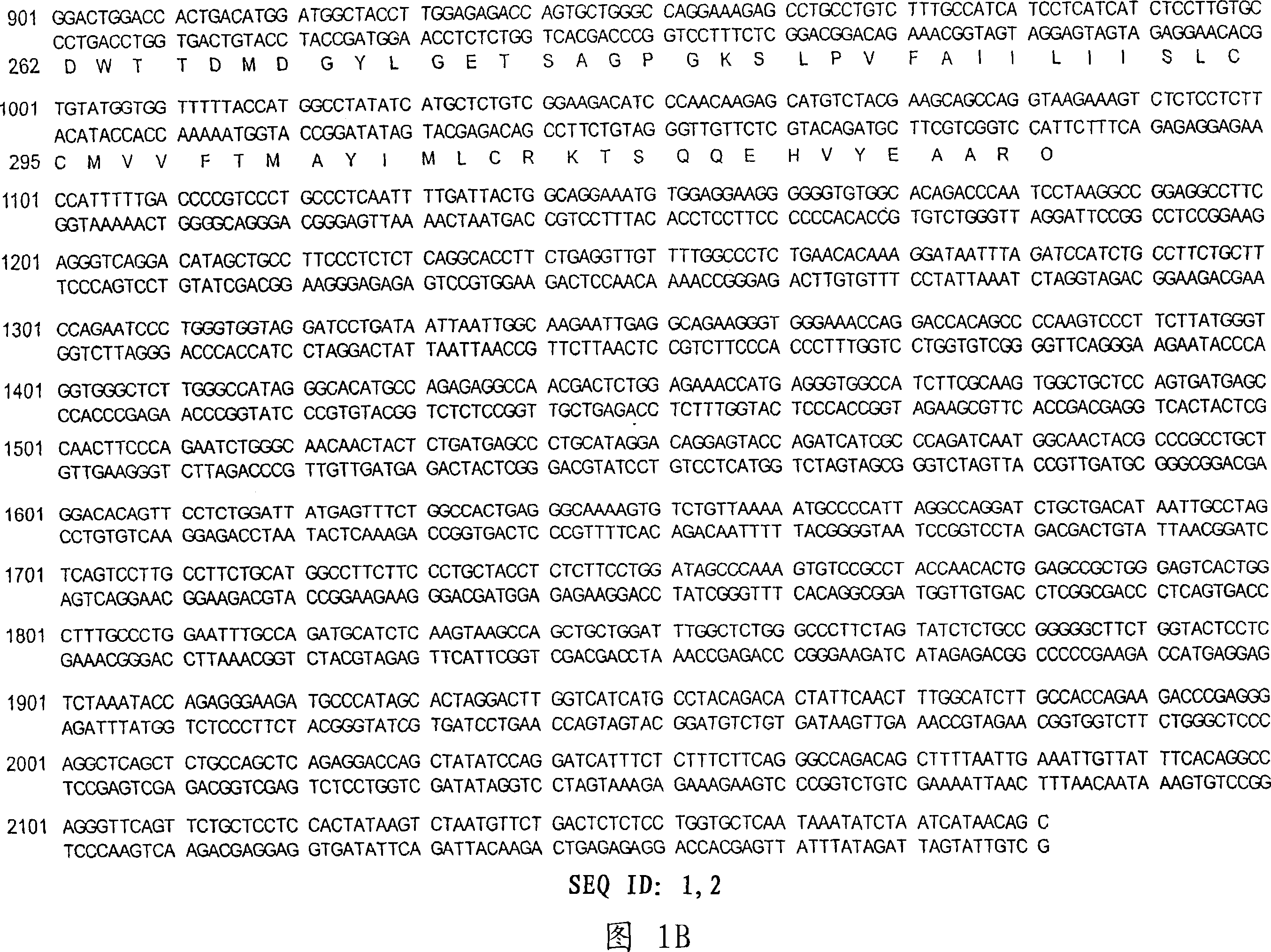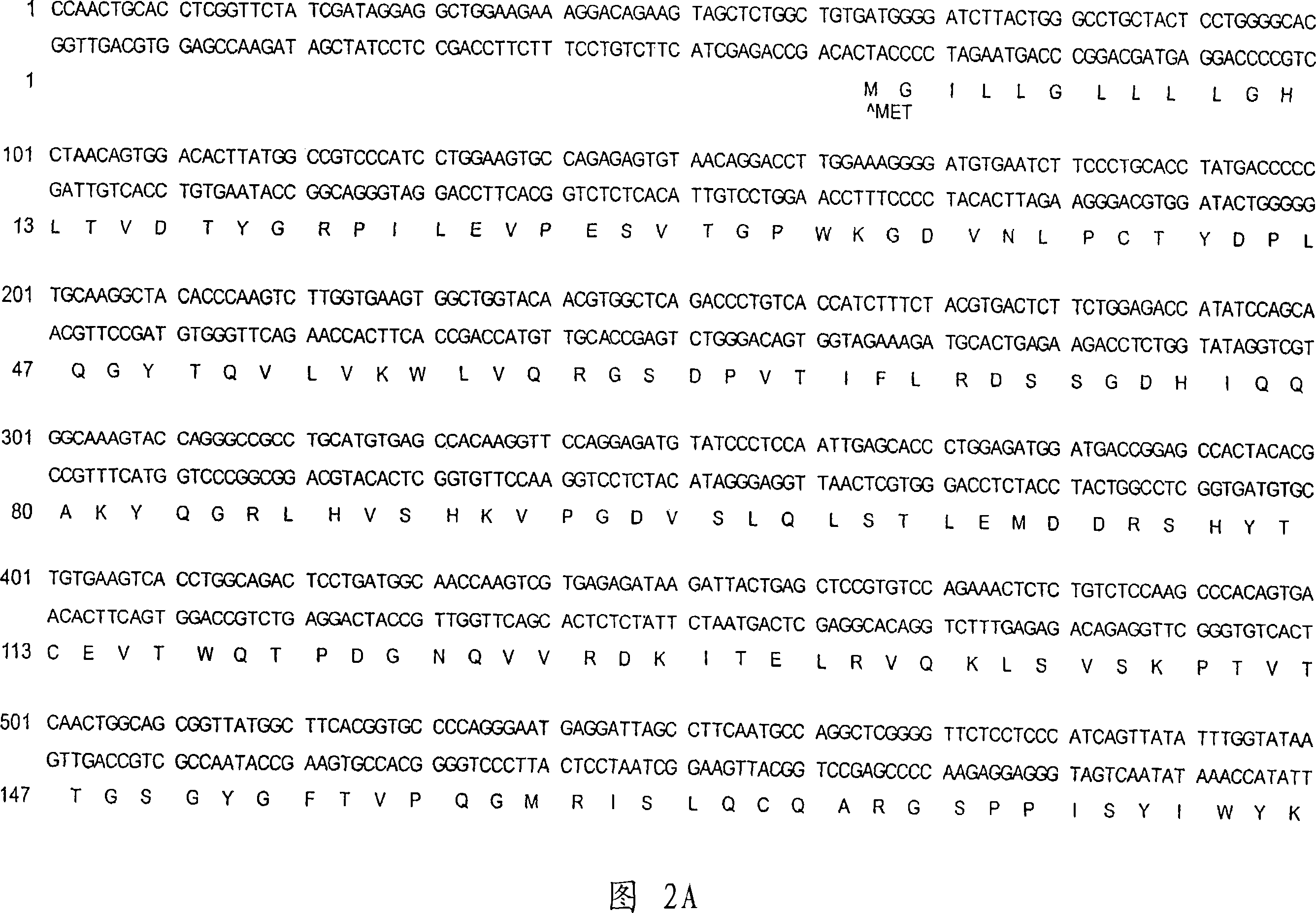CRIg polypeptide for prevention and treatment of complement-associated disorders
A complement-related disease, complement technology, used in the prevention and/or treatment of complement-related disorders and complement-related eye conditions
- Summary
- Abstract
- Description
- Claims
- Application Information
AI Technical Summary
Problems solved by technology
Method used
Image
Examples
preparation example Construction
[0250] 2. Preparation of native sequence and variant CRIg polypeptides
[0251] DNA encoding a CRIg polypeptide can be obtained from a cDNA library prepared from a tissue believed to have CRIg mRNA and express it at detectable levels. Therefore, human CRIg DNA can be conveniently obtained from a cDNA library prepared from human tissue, such as described in Example 1. CRIg-encoding genes can also be obtained from genomic libraries or by oligonucleotide synthesis.
[0252] Libraries can be screened with probes (such as antibodies to CRIg or oligonucleotides of at least about 20-80 bases) designed to identify the gene of interest or the protein encoded thereby. Screening of cDNA or genomic libraries with selected probes can be performed using standard procedures, such as those described by Sambrook et al., Molecular Cloning: A Laboratory Manual, New York, Cold Spring Harbor Laboratory Press, 1989. An alternative method to isolate the gene encoding CRIg is to use PCR methodology...
Embodiment 1
[0253] Example 1 describes techniques for screening cDNA libraries. The oligonucleotide sequences selected as probes should be sufficiently long and sufficiently unambiguous that false positives are minimized. The oligonucleotide is preferably labeled such that it is detectable when hybridized to DNA in the library being screened. Labeling methods are well known in the art and include the use of radiolabels, such as 32 P-labeled ATP, biotinylated or enzymatically labeled. For hybridization conditions, including medium stringency and high stringency, see Sambrook et al, supra.
[0254] Sequences identified in such library screening methods can be compared and aligned to other known sequences deposited and available in public databases such as GenBank or other proprietary sequence databases. Sequence identity (either at the amino acid level or at the nucleotide level) within defined regions of a molecule or across the full-length sequence can be determined using computer soft...
Embodiment
[0394] Unless otherwise stated, commercial reagents mentioned in the examples were used according to the manufacturer's instructions. The source of those cells identified by ATCC numbering in the Examples below and throughout the specification is the American Type Culture Collection (10801 University Boulevard, Manassas, VA 20110-2209).
[0395] Example 1: Isolation of a cDNA clone encoding human CRIg (PRO362)
[0396] The expressed sequence tag (EST) database was searched using the extracellular domain (ECD) sequences of approximately 950 known secreted proteins (including secretion signals, if any) in the Swiss-Prot public protein database. EST databases include public EST databases (such as GenBank) and private ESTDNA databases (LIFESEQ , Incyte Pharmaceuticals, Palo Alto, CA). The search compares the ECD protein sequence with the six reading frame translations of the EST sequence using the computer program BLAST or BLAST-2 (eg, Altshul et al., Methods in Enzymology 266...
PUM
| Property | Measurement | Unit |
|---|---|---|
| molecular weight | aaaaa | aaaaa |
Abstract
Description
Claims
Application Information
 Login to View More
Login to View More - R&D
- Intellectual Property
- Life Sciences
- Materials
- Tech Scout
- Unparalleled Data Quality
- Higher Quality Content
- 60% Fewer Hallucinations
Browse by: Latest US Patents, China's latest patents, Technical Efficacy Thesaurus, Application Domain, Technology Topic, Popular Technical Reports.
© 2025 PatSnap. All rights reserved.Legal|Privacy policy|Modern Slavery Act Transparency Statement|Sitemap|About US| Contact US: help@patsnap.com



